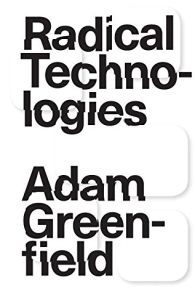Join getAbstract to access the summary!

Join getAbstract to access the summary!
Adam Greenfield
Radical Technologies
The Design of Everyday Life
Verso Books, 2017
What's inside?
Adam Greenfield critiques how technologies like smartphones shape people’s experience of the world.
Recommendation
Innovators designed and marketed networked digital information technology, such as the omnipresent smartphone and even 3D printers, to make life better, easier and, perhaps, even more egalitarian. But, argues tech specialist Adam Greenfield, the real impact of these technologies goes further: they transform people’s day-to-day life. For many people, navigating urban life without a smartphone has become impossible. Yet despite the increasing centrality of these information technologies, few people know how they work, what drives their design, who makes them or whether anyone else has access to what they do on their phones all day long. Greenfield explains the ways in which disruptive technologies leave incumbent political and economic powers intact and often serve them. To maintain individual autonomy and control, people need to know more about the “radical technologies” they embrace. Greenfield may sometimes overstate the degree to which those who create new technologies and those with access to the vast data they generate put ordinary users at risk and undermine their agency, but his scope is broad and his vision is compelling. getAbstract recommends his eloquent and passionate argument to entrepreneurs, business students and activists concerned with the impact of technology.
Summary
About the Author
Adam Greenfield, also the author of Against the Smart City, taught in the Urban Design Program of the UCL Bartlett Faculty of the Built Environment at University College London and the Interactive Telecommunications Program at New York University. He was head of design for Nokia; an information architect in Tokyo; a rock critic for SPIN Magazine; a medic at the Berkeley Free Clinic; and a sergeant in the US Army’s Special Operations Command.



















Comment on this summary